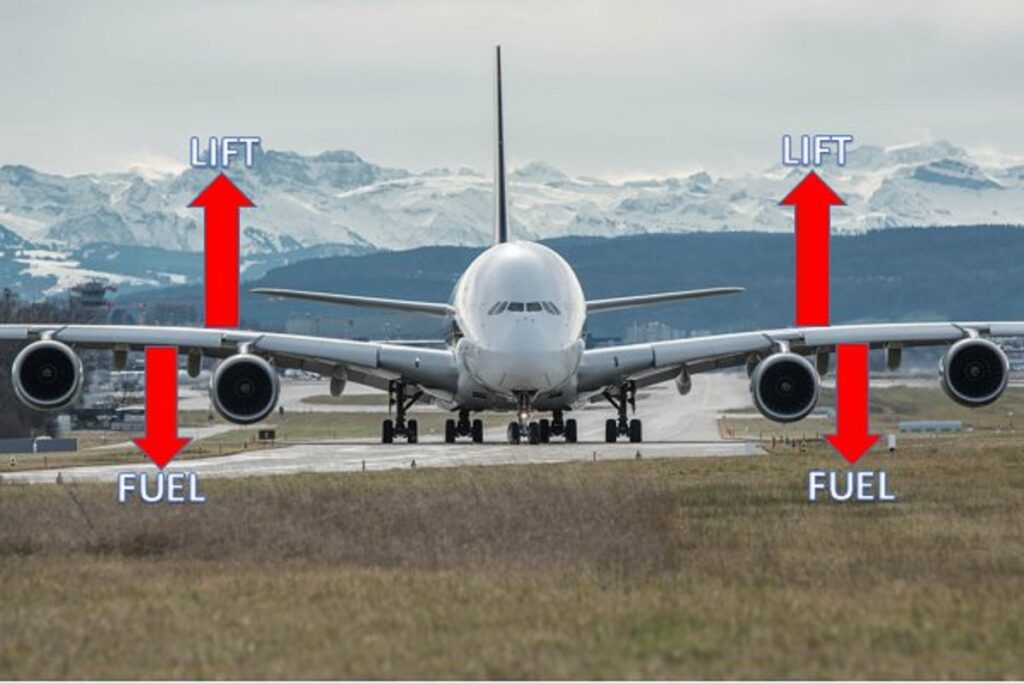
It is the aircraft weight after we subtract the fuel from the equation. So, for instance if the aircraft has take off weight of about 65000 kgs and out of it 12000 kgs is the fuel, then the zero fuel weight is (65000 – 12000) = 53000 kgs. The zero fuel weight is not a significant value.
What is significant to aircraft operations is the Maximum zero fuel weight (MZFW). The MZFW is an aircraft structural weight and must never be exceeded.
To explain how MZFW is derived we have to first understand how the aircraft weight can stress the aircraft structure. The wings of the aircraft, as you might already know generates lift. As lift is a force and as it is generated upwards on the wing, it can pull up the wings, particularly in high lift demand situations such when banking the aircraft.
This can put in immense amounts of stress on the wing root. In large aircraft, by storing fuel in the wings, the stress is minimized to an acceptable level. And this is where MZFW comes in. You can think of an aircraft with a very little amount of fuel in the wings or just for the explanation an aircraft with no fuel in the wing.
With no fuel/ less fuel, the lift is free to pull the wings up as there is nothing pushing the wing down. If the aircraft is at a higher weight, the lift force required will be greater and the structural stress will increase with it.
The MZFW thus makes sure that the aircraft is not loaded to a level where its wings can be stressed without any fuel in the wing tanks. It is a structural limitation and must always be respected.
Author – Anas Maaz
Airline pilot. Airbus A320/A321





